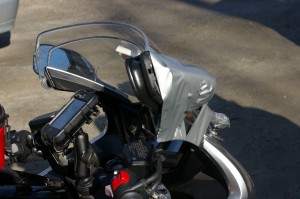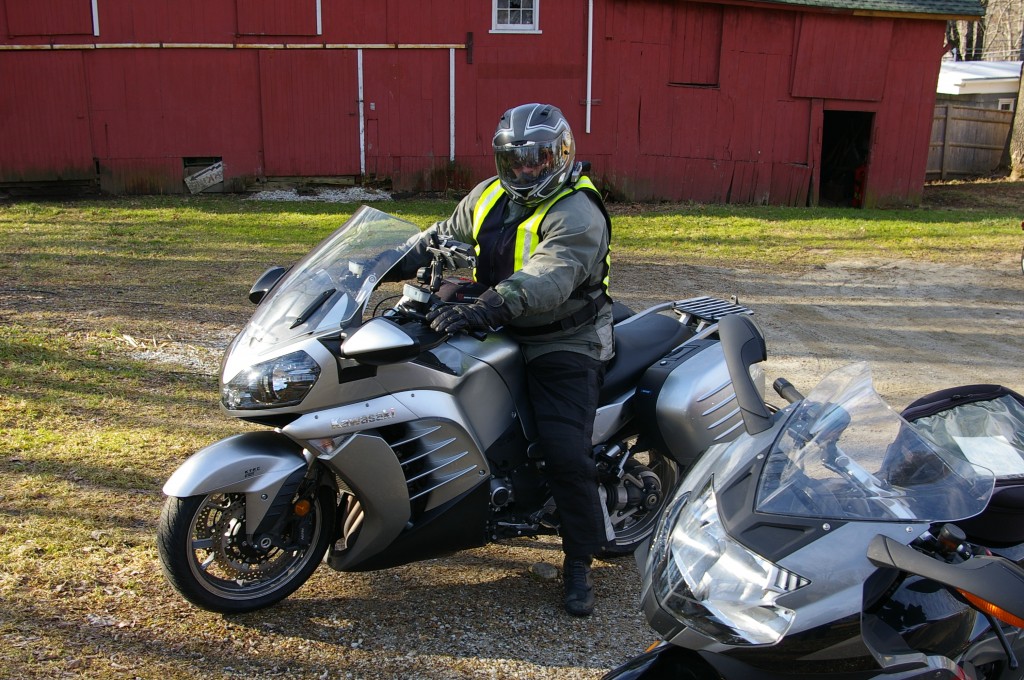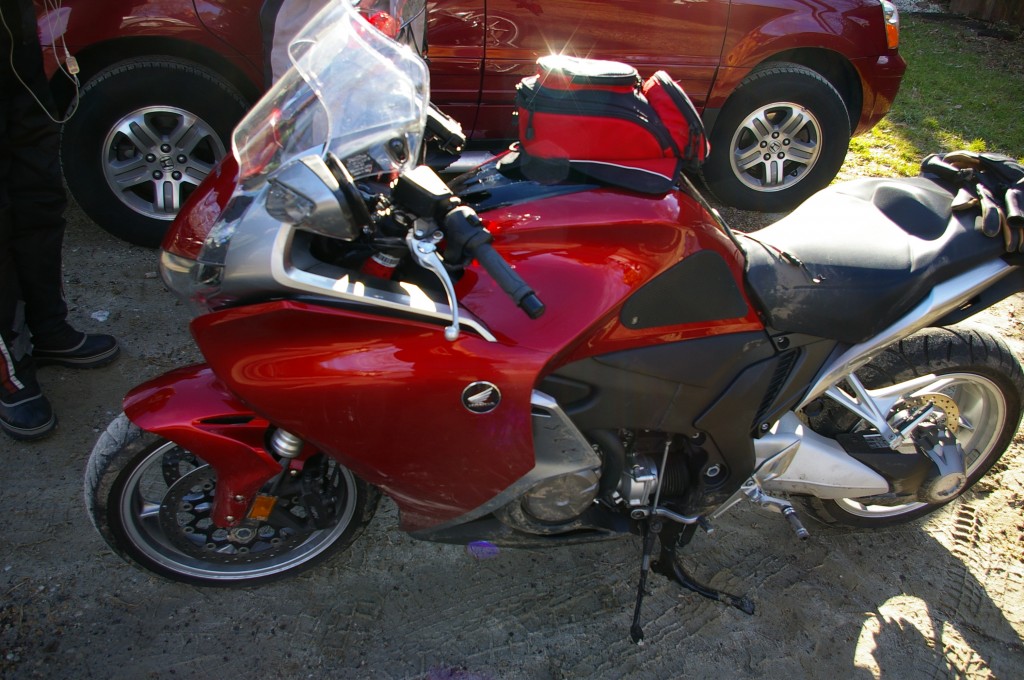By Steve Smith of RIDE-CT.com
While rolling the Kawasaki Concours 14 backwards out of the garage and down the steep incline of the driveway on New Year’s Day, I felt an odd unsteadiness as my feet began to  slide slightly on the asphalt. In a heartbeat, I recognized “black ice.” I continued very cautiously to maneuver the more than 700-pound machine to the street. The road was also glazed over with black ice, which I determined by testing the surface using a technique that resembled “The Twist” as memories of a past black ice experience that caught me off guard on an exit ramp about 10 years ago popped into my head.
slide slightly on the asphalt. In a heartbeat, I recognized “black ice.” I continued very cautiously to maneuver the more than 700-pound machine to the street. The road was also glazed over with black ice, which I determined by testing the surface using a technique that resembled “The Twist” as memories of a past black ice experience that caught me off guard on an exit ramp about 10 years ago popped into my head.
A day earlier, I’d received an email from fellow CONREP instructor John Purdy Jr. asking several riders if they might be up for a breakfast gathering of the Church of Two Wheels at Toymaker’s Café in Falls Village. The weather report was for a nice day, with the temperature possibly reaching 50 degrees. A few “parishioners” responded and would be riding in from Connecticut, New York and Massachusetts. I was to meet John at 9:10 a.m. in Naugatuck.
Internet weather in the morning showed above freezing temperatures along the planned route and it was 38 degrees when I geared up. The sky was blue and getting sunny. I thought other than damp roads and cool temperatures it should be a great day for a ride. Having parked the bike on the road because of the black ice, I went back inside and left John a message that I was going to be delayed. He sent word to the others on the road conditions and we decided to delay departure until 10 a.m. to allow the roads to defrost and for fog to clear.
Just as we were preparing to depart, John got the call that our friend Ray from New York City had “found” some black ice entering a curve on Route 199 near Pine Plains, NY. He’d  “gone down” on his new Honda VFR1200F. He was uninjured and after some minor repairs to the bike decided to continue on.
“gone down” on his new Honda VFR1200F. He was uninjured and after some minor repairs to the bike decided to continue on.
Because of this, once under way, we diligently watched road conditions, knowing that any surface that appeared damp and in a shady area might be black ice. When we approached dubious road conditions we rode slower than normal with minimal lean angle, keeping our rides as upright as possible. I also periodically monitored the outside temperature displayed on my console to know if we hit any place where the air temperature may be unexpectedly cooler.
As the sun got stronger, the temps increased slowly, the roads began to dry and the “pucker factor” began to subside. The others were at Toymaker’s Café by the time we arrived, including Ray. He noted that it was unfortunate experience but at least it was only his ego that was bruised. The VFR1200F can be repaired. We hovered around him, checking out how his riding suit and helmet prevented injury or road rash. I totally empathized with him, as his tale was reminiscent of my own from years ago.
Here’s a Safe Riding tip:
While it’s great to get out and enjoy some winter riding, always be mindful that black ice can be out there when you least expect it – especially any time the temperature is hovering around the freezing point.
Bridges and overpasses are more susceptible to ice, but watch out for potential black ice any place that looks wet and is shaded from the sun. Be cautious of the air temperature and consider installing a low cost thermometer. Check out weather and traffic reports prior to departure. Be cautious of the dangerous mix of cold tire and cold pavement. Cold tires will have reduced traction until they warm up. And wearing protective gear, including a full-face helmet, can minimize injury if black ice bites you.
What’s it like to be bitten by black ice? This video provides an example:
 Ride CT & Ride New England Serving New England, NYC and The Hudson Valley!
Ride CT & Ride New England Serving New England, NYC and The Hudson Valley!



